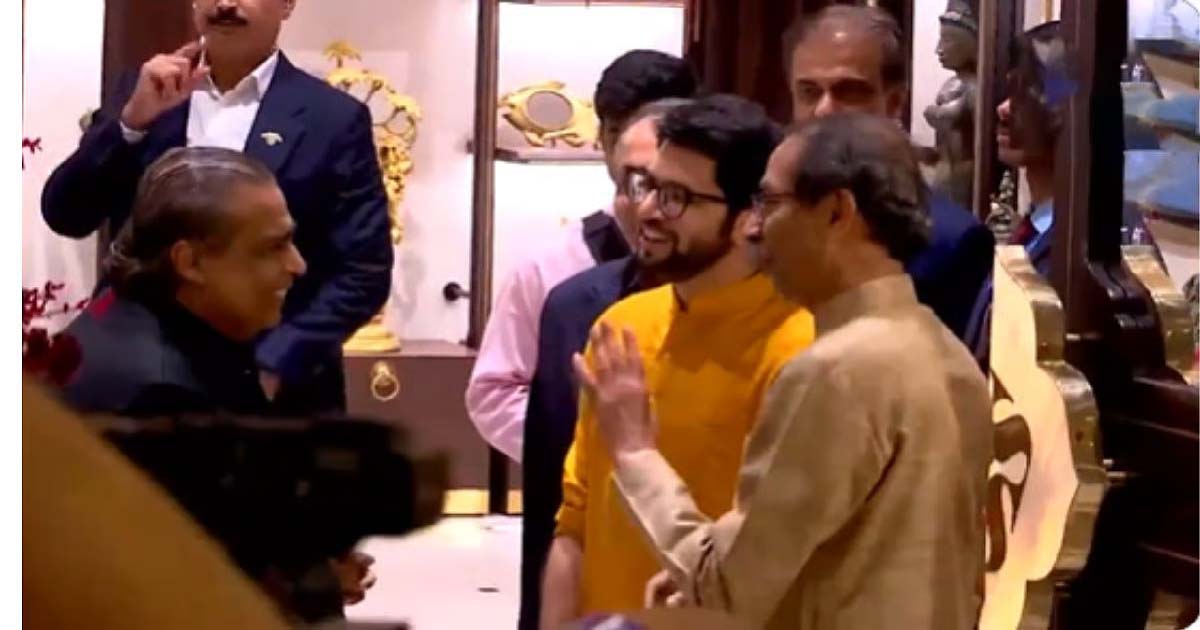National News
Kolkata Rape & Murder Case: TMC Refutes Allegations Of Police Bribing RG Kar Victim’s Parents

Kolkata: In a new twist of an event, a day after the RG Kar victim’s parents and relatives taking part in candle light protest in RG Kar hospital on Wednesday late evening raised finger at police and said that the police had offered them money, Trinamool Congress (TMC) leader and minister Shashi Panja on Thursday slammed the opposition for such purported videos.
“Several fake videos are appearing one after the other. On Wednesday a video appeared where the victim’s parents alleged police offering him money. Today again another video surfaced where it was seen that the parents themselves calling it a fake video. We have solidarity towards the family. The political parties should not play vulture politics over dead bodies,” said Panja.
Panja also said that the opposition should protest outside the CBI office as the case is now being handled by the central agency. Praising the ‘Aparajita’ bill recently passed in the state Assembly, Panja said, “This is the solution to fight against such social diseases.”
Addressing the media on Wednesday late evening, from RG Kar hospital, the victim’s parents and relatives alleged that DC North had offered them money at their residence while the dead body of their daughter was kept in the house.
“I have a few questions. Why is DC central Indira Mukherjee telling lies? Why without any medical checkup why was it said that my daughter has committed suicide? Why was the autopsy done so late? Who will answer all these questions? The DC North had offered us money which we refused instantly,” said the victim’s father.
It can be recalled that the victim’s aunt also slammed the police on Wednesday for their ‘proactiveness’ till the body was cremated.
“There was a car outside the hospital, which I thought was for the family members but the police didn’t allow us to enter the car and only police got inside the car. Then we saw the body of our daughter cordoned off by the police leaving the hospital. Then we booked a van and suddenly called the victim’s father and heard they were in Tallah police station. When the body was inside the house police even offered us money. After the body was cremated then the police became inactive and didn’t even care for the family members. Is this human?” further questioned the aunt of the victim.
Victim’s mother asked everyone to continue with the protest. Meanwhile, Leader of Opposition Suvendu Adhikari on Thursday had written a letter to President Droupadi Murmu requesting her to withdraw/forfeit the prestigious President’s Police Medal and Police Medal conferred upon Vineet Goyal; IPS, (West Bengal: RR – 1994), presently Commissioner of Police, Kolkata, ‘in connection with his reprehensible, deplorable and shameful conduct during the course of investigations into the rape and murder of the Resident Doctor of RG Kar Medical College, Kolkata’.
Meanwhile, amid continuous protest of the rape and murder incident, few eminent artists including sculptor Sanatan Dinda has resign from the post he held in the state government. He was a member of ‘Charukala Parshad’.
National News
Mukesh Ambani, Shiv Sena UBT Chief Uddhav Thackeray & Son Aaditya Share Warm Greetings At Mumbai’s Swadesh Event

Mumbai: Reliance Industries Limited Chairman and Managing Director Mukesh Ambani, Shiv Sena (UBT) chief Uddhav Thackeray and son Aaditya were seen sharing warm greetings at Mumbai’s SWADESH event, which was held at Eros. SWADESH: An Artisanal Christmas Program at the Swadesh flagship store was held to honour India’s artists and artisans.
Mukesh Ambani, Uddhav Thackeray, and Aaditya Thackeray were seen engaging warmly as they toured exhibits featuring artisanal creations.
The event was also attended by several Bollywood celebrities, sports and business personalities, including Ranveer Singh, Deepika Paukone, Madhuri Dixit Nene and husband Dr Shriram Madhav Nene, Yuvraj Singh and wife Hazel Keech, Karisma Kapoor, Ananya Panday, Janhvi Kapoor, Riteish Deshmukh and Genelia Deshmukh, Aneet Padda, Anand Mahindra, among others.
The artisians who were honoured by Nita Ambani include Shri Biren Basak, Padma Shri Awardee (2021) renowned for Tangail and Jamdani weaves; Shri V. Panneerselvam, Tanjore painter honoured with the Shilp Guru Award (2019) and National Award (2011); Shri Shammi Bannu Sharma, seventh-generation miniature painter and National President Awardee (2014); Shri GhanShyam Sarode, celebrated Paithani textile designer and handloom revivalist; Ms. Gunjan Jain, Odisha Ikat textile artist and National Award winner (2024).
Nita Ambani, Founder-Chairperson of Reliance Foundation, honoured artists and artisans at the celebration of the Swadesh flagship store. During the event, Nita Ambani wore a pair of antique kundan polki jhumkas, which were handcrafted over 100 years ago. On her hand rested a statement bird-shaped ring crafted in the jadau tradition using polki diamonds and rubies, a signature piece from Swadesh.
But perhaps the most personal detail was the ornate haath phool from her mother’s collection. Her look complemented her stunning peacock-blue Banarasi saree by Swadesh. The silk drape featured delicate meena work woven using the traditional kadhua technique, a method known for its fineness and the almost sculpted quality it lends to motifs.
National News
Mayawati pays tribute to Ambedkar, asks when will ‘good days’ come for the Bahujan community

Lucknow, Dec 6: On the 69th Mahaparinirvan Day of Bharat Ratna Dr Bhimrao Ambedkar, Bahujan Samaj Party (BSP) national president and former Uttar Pradesh Chief Minister Mayawati expressed concern that crores from the Bahujan community have yet to see the “good days” of self-respect and dignity, despite following the path shown by the architect of the Indian Constitution.
Taking to social media platform X, Mayawati wrote, “Today, on the death anniversary of Bharat Ratna, the most revered Babasaheb Dr Bhimrao Ambedkar, the messiah of crores of people from the Bahujan Samaj in the country, I paid tribute to him.”
She said that party leaders and followers gathered in large numbers at various Ambedkar memorials across the country to pay tributes to the architect of the Constitution.
“Members of the party from 12 organisational divisions of Uttar Pradesh, along with followers of Babasaheb, gathered in large numbers at the grand ‘Dr Bhimrao Ambedkar Social Change Site’ built by the BSP government on the banks of the Gomti River in Lucknow. People from Western Uttar Pradesh, Delhi, and Uttarakhand also gathered at the ‘National Dalit Inspiration Site and Green Garden’ established by the BSP government in Noida and paid their respects,” she added.
Mayawati further said that BSP National Coordinator Akash Anand also paid tribute at the Noida memorial. She noted that similar tribute programmes were held across various states at the zonal level.
“For this, I express heartfelt thanks and gratitude to everyone, especially to the people of Uttar Pradesh,” she said.
Reflecting on Ambedkar’s legacy, Mayawati questioned why millions from the Bahujan community were still waiting for dignity and social justice.
“On special occasions such as Independence Day, Republic Day, and on the birth and death anniversaries of Babasaheb, one question continues to arise — when will the ‘good days of self-respect and equality’ come for crores of Bahujans in the country, in line with the humanistic and welfare goals of the Constitution?” she wrote.
She asserted that the BSP, as the country’s only Ambedkarite political party, remains committed to Ambedkar’s mission.
“The BSP is conscious, alert, and deeply concerned about why true ‘good days’ have not yet come for the exploited, oppressed, and marginalised Dalits, tribals, and OBCs — the very communities for whom Babasaheb dedicated his life and enacted strong constitutional safeguards. Salute to him,” Mayawati added.
National News
Mega Block On Mumbai-Pune Line Tomorrow: Is Your Train Cancelled? Check Here

Pune: For maintenance purposes, a mega block is in place on Sunday on the Mumbai-Pune Railway Line. Due to this, many key express trains have been cancelled, while some locals from Pune to Lonavala will also not provide the service on Sunday.
Express trains, which have been completely cancelled, include the Sinhagad Express, the Deccan Queen Express, the Pragati Express, the Mumbai Pune Intercity Express and the Indrayani Express.
Meanwhile, many Pune-Lonavala local trains have been cancelled as well. Some of them have been completely cancelled, and some of them will begin or end their journey at Talegaon Dabhade Railway Station. They won’t connect Pune to Lonavala. Railway authorities have asked commuters to be aware of this and act accordingly.
Mega-blocks on the Mumbai–Pune Railway Line and the broader Mumbai suburban network are scheduled mainly on Sundays to allow Central Railway to carry out large-scale maintenance that cannot be performed during heavy weekday traffic. These blocks provide uninterrupted time for essential work on tracks, overhead equipment, points, signals, and bridges, ensuring long-term safety and reliability of both suburban and long-distance operations.
Sundays (or public holidays) are chosen because commuter footfall is comparatively lower. This reduces disruption to daily travel patterns. Mega-blocks occur almost every Sunday across the Main, Harbour and Trans-Harbour lines and occasionally affect stretches on the Mumbai–Pune intercity route as well. Their duration typically ranges from four to seven hours; earlier blocks commonly lasted four to five hours, though recent examples include work between Vidyavihar and Thane from 8:00 a.m. to 1:30 p.m. Mega-blocks may also lead to temporary cancellations or diversions of Pune–Mumbai trains when work is scheduled on those sections.
-

 Crime3 years ago
Crime3 years agoClass 10 student jumps to death in Jaipur
-

 Maharashtra1 year ago
Maharashtra1 year agoMumbai Local Train Update: Central Railway’s New Timetable Comes Into Effect; Check Full List Of Revised Timings & Stations
-

 Maharashtra1 year ago
Maharashtra1 year agoMumbai To Go Toll-Free Tonight! Maharashtra Govt Announces Complete Toll Waiver For Light Motor Vehicles At All 5 Entry Points Of City
-

 Maharashtra1 year ago
Maharashtra1 year agoFalse photo of Imtiaz Jaleel’s rally, exposing the fooling conspiracy
-

 National News1 year ago
National News1 year agoMinistry of Railways rolls out Special Drive 4.0 with focus on digitisation, cleanliness, inclusiveness and grievance redressal
-

 Maharashtra1 year ago
Maharashtra1 year agoMaharashtra Elections 2024: Mumbai Metro & BEST Services Extended Till Midnight On Voting Day
-

 National News1 year ago
National News1 year agoJ&K: 4 Jawans Killed, 28 Injured After Bus Carrying BSF Personnel For Poll Duty Falls Into Gorge In Budgam; Terrifying Visuals Surface
-

 Crime1 year ago
Crime1 year agoBaba Siddique Murder: Mumbai Police Unable To Get Lawrence Bishnoi Custody Due To Home Ministry Order, Says Report






















